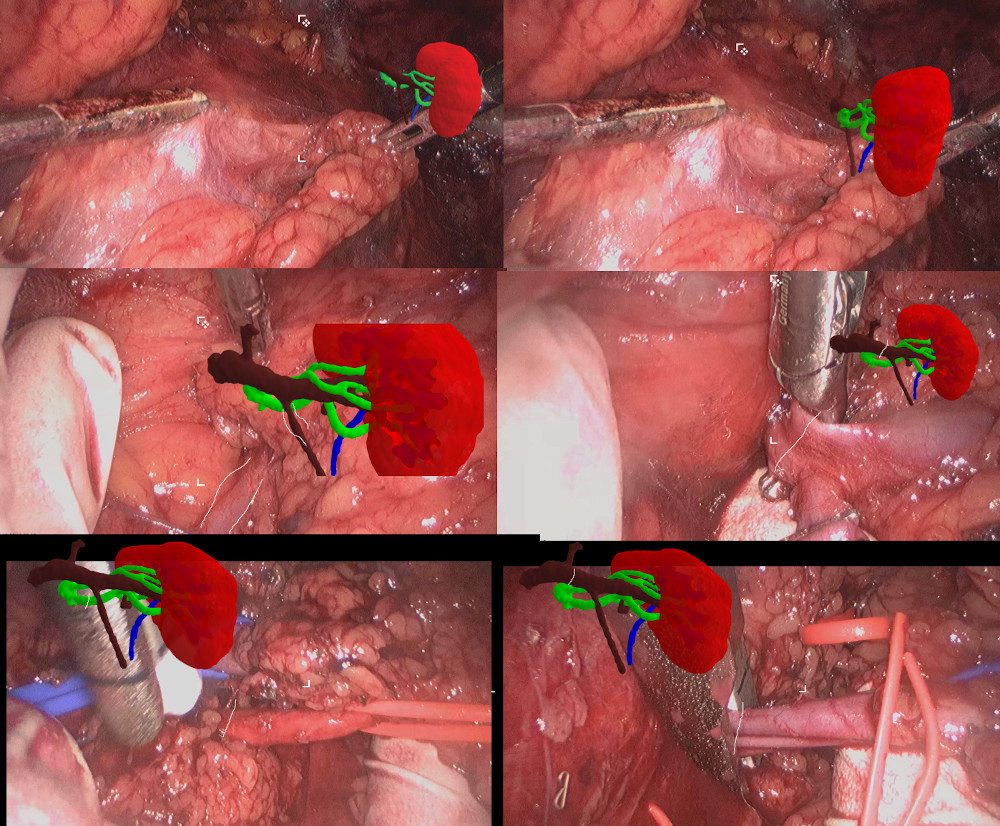Augmented Reality in Hand-Assisted Retroperitoneal Donor Nephrectomy – Procedure Step Adjusted Evaluation for the Surgeons’ Benefits
R. Wahba1, L. Krames2, J. Hogervorst3, R. R. Datta1, M. N. Thomas1, P. Suppa3, D. L. Stippel1
1Department of General, Visceral, Cancer and Transplantation Surgery, Faculty of Medicine and University Hospital of Cologne, University of Cologne, Köln, Germany, 2Karlsruhe Institute of Technology, Institute of Biomedical Engineering (IBT), Karlsruhe, Germany, 3Olympus Surgical Technologies Europe, Hamburg, Germany
Meeting: 2022 American Transplant Congress
Abstract number: 543
Keywords: Kidney, Laparoscopy, Living donor, Surgery
Topic: Clinical Science » Organ Inclusive » 72 - Machine Learning, Artificial Intelligence and Social Media in Transplantation
Session Information
Session Name: Machine Learning, Artificial Intelligence and Social Media in Transplantation
Session Type: Rapid Fire Oral Abstract
Date: Tuesday, June 7, 2022
Session Time: 5:30pm-7:00pm
 Presentation Time: 6:50pm-7:00pm
Presentation Time: 6:50pm-7:00pm
Location: Hynes Room 210
*Purpose: To identify procedure steps where a patient-specific CT-reconstructed virtual 3D model of the kidney displayed on the screen can support the surgeon while performing hand-assisted retroperitoneal living donor nephrectomy (HARP).
*Methods: HARP procedure videos (n=5) were evaluated with a proprietary software to create augmented reality. The software allows to display the virtual 3D model directly on the laparoscopic video stream and to manipulate the 3D model. The reviewer marked relevant procedure steps and was asked about (i) the value derived from the virtual 3D model and (ii) the desired additional functionality to unleash the full potential of the virtual 3D.
*Results: 84 situations were identified. The most often mentioned value was time-saving (n=70, 83%), general anatomical orientation (n=37,44%), identification of vessels (n=34, 40%) ,prevention of bleeding (n=29,35%) and identification of structures (n=24,29%). Additional functionalities of the software were desired in 61/84 surgical situations. Automatic overlay (n=52 85%), visually identification of vascular structures(n=38,62%) and a warning functionality to increase the awareness were most desired.
*Conclusions: A patient-specific virtual 3D model on the display can improve the spatial understanding of the surgeon during HARP. Relevant procedure steps are the initial and continuous anatomical orientation and the identification of vessels.
To cite this abstract in AMA style:
Wahba R, Krames L, Hogervorst J, Datta RR, Thomas MN, Suppa P, Stippel DL. Augmented Reality in Hand-Assisted Retroperitoneal Donor Nephrectomy – Procedure Step Adjusted Evaluation for the Surgeons’ Benefits [abstract]. Am J Transplant. 2022; 22 (suppl 3). https://atcmeetingabstracts.com/abstract/augmented-reality-in-hand-assisted-retroperitoneal-donor-nephrectomy-procedure-step-adjusted-evaluation-for-the-surgeons-benefits/. Accessed July 4, 2025.« Back to 2022 American Transplant Congress

